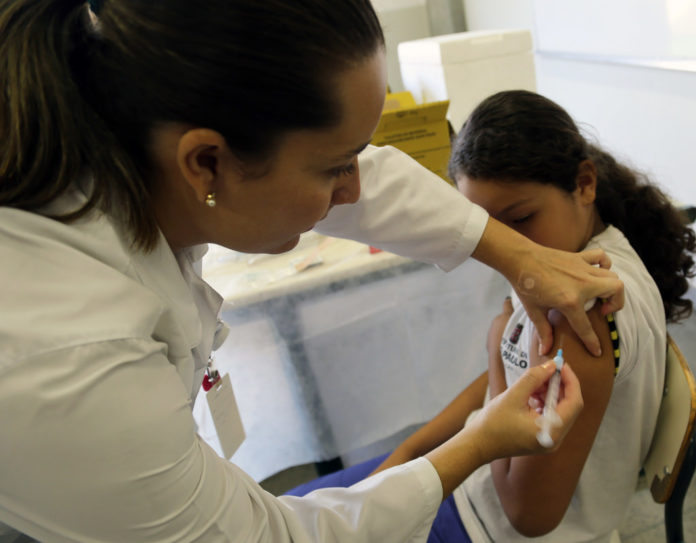A meta-analysis of 60 million people in high-income countries finds significant decreases in HPV infections over 8-9 years after girls-only HPV vaccination.
A new study has proved that HPV infections, anogenital wart diagnoses and precancerous cervical lesions go down after HPV vaccination.
Published in The Lancet, the results provide strong evidence of HPV vaccination working to prevent cervical cancer in real-world settings as both the cause (HPV infection) and precancerous cervical lesions are declining. These results have implications for policy makers around the world as it backs the recently revised WHO position on vaccinating multiple age groups rather than a single cohort when introducing the vaccine. India has already given an in-principle nod for the introduction of HPV vaccine in the universal immunisation programme. The rollout is supposed to happen in 2020.
The HPV vaccine was first licensed in 2007 and since then it has been adopted into 99 countries* and territories. An earlier version of this meta-analysis with data for four years post-vaccination showed substantial decreases in two types of HPV – 16 and 18 – that cause the majority of cervical cancers and anogenital wart diagnoses among women who had received the vaccine along with herd effects among boys and older women. However, the past meta-analysis was unable to assess CIN2+ lesions, which is the most proximal outcome to cervical cancer, as it was too soon after vaccination to be able to estimate the impact.
Five to nine years after vaccination CIN2+ decreased significantly. The team reports a 51% reduction in screened girls aged 15-19 years and a 31% reduction in screened women aged 20-24 years
In addition, since that publication many more countries have introduced vaccination programmes and in 2016 the WHO updated its advice to recommend HPV vaccination of multiple age cohorts of girls – from nine to fourteen.
To update their 2015 review which included 18 studies, the team added 47 new studies published between February 2014 and October 2018 that compared the frequency of one or more HPV endpoints (HPV infections, anogenital wart diagnoses, or histologically confirmed CIN2+) between pre and post-vaccination periods in the general population. In total, their analysis includes 65 articles in 14 high-income countries – including 23 for HPV infection, 29 for anogenital warts and 13 for CIN2+ lesions. It brings together data from over 60 million individuals over eight years.
They found that the two types of HPV that cause 70% of cervical cancers, HPV 16 and 18, were significantly reduced after vaccination. They report a decrease of 83% in girls aged 13-19 and of 66% in women aged 20-24 years after five to eight years of vaccination. An overall 54% reduction was seen in three other types of HPV, 31, 33 and 45 in girls aged 13-19 years.
There were also significant reductions in anogenital wart diagnoses. After five to eight years of vaccination, they found decreases of 67% in girls aged 15-19, 54% in women aged 20-24 and 31% in women aged 25-29 as well as reductions of 48% in boys aged 15-19 and 32% in men aged 20-24 years.
Five to nine years after vaccination CIN2+ decreased significantly. The team reports a 51% reduction in screened girls aged 15-19 years and a 31% reduction in screened women aged 20-24 years.
The analysis shows the greater and faster impact and herd effects in countries with both multi-cohort vaccination and high vaccination coverage. In such countries after five to eight years of vaccination, anogenital wart diagnoses declined by 88% among girls and 86% in boys aged 15-19 years compared with 44% among girls and 1% among boys from countries with single-cohort or low routine vaccination coverage. In girls aged 15-19 years, CIN2+ decreased by 57% in countries with both multi-cohort vaccination and high vaccination coverage whereas there was no decrease in countries with single-cohort vaccination or low routine coverage.
Mélanie Drolet of the CHU de Quebec-Laval University Research Center says: “Our results provide strong evidence that HPV vaccination works to prevent cervical cancer in real-world settings as both HPV infections that cause most cervical cancers and precancerous cervical lesions are decreasing. We saw that programmes with multiple age cohorts of girls vaccinated and high vaccination coverage have greater direct impact and herd effects. This finding reinforces WHO’s recently revised position on HPV vaccination to recommend HPV vaccination of multiple age cohorts of girls aged 9–14 years old when the vaccine is introduced in a country, rather than vaccination of a single cohort.”


